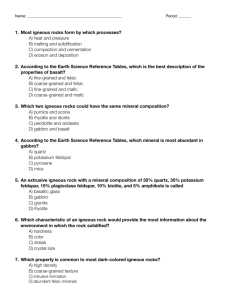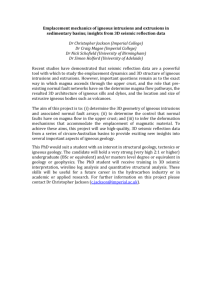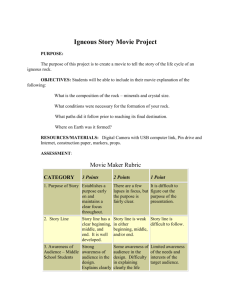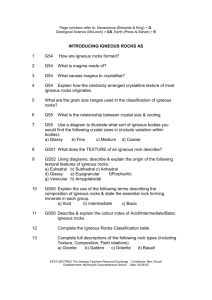here - the Geological Society of Glasgow
advertisement
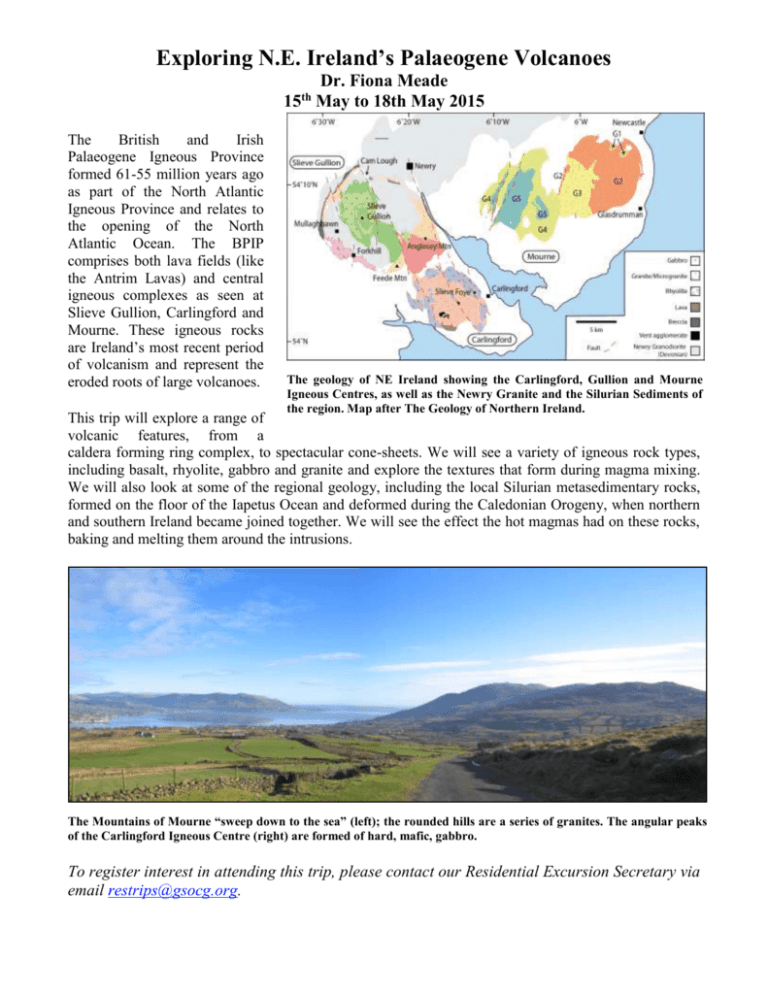
Exploring N.E. Ireland’s Palaeogene Volcanoes Dr. Fiona Meade 15 May to 18th May 2015 th The British and Irish Palaeogene Igneous Province formed 61-55 million years ago as part of the North Atlantic Igneous Province and relates to the opening of the North Atlantic Ocean. The BPIP comprises both lava fields (like the Antrim Lavas) and central igneous complexes as seen at Slieve Gullion, Carlingford and Mourne. These igneous rocks are Ireland’s most recent period of volcanism and represent the eroded roots of large volcanoes. The geology of NE Ireland showing the Carlingford, Gullion and Mourne Igneous Centres, as well as the Newry Granite and the Silurian Sediments of the region. Map after The Geology of Northern Ireland. This trip will explore a range of volcanic features, from a caldera forming ring complex, to spectacular cone-sheets. We will see a variety of igneous rock types, including basalt, rhyolite, gabbro and granite and explore the textures that form during magma mixing. We will also look at some of the regional geology, including the local Silurian metasedimentary rocks, formed on the floor of the Iapetus Ocean and deformed during the Caledonian Orogeny, when northern and southern Ireland became joined together. We will see the effect the hot magmas had on these rocks, baking and melting them around the intrusions. The Mountains of Mourne “sweep down to the sea” (left); the rounded hills are a series of granites. The angular peaks of the Carlingford Igneous Centre (right) are formed of hard, mafic, gabbro. To register interest in attending this trip, please contact our Residential Excursion Secretary via email restrips@gsocg.org.
